Dogs are not exempt from gastrointestinal problems and, just like humans, they may require an enema to clear out the blockage. This can be a stressful experience for both the dog and the owner.
In this article, we will discuss what to expect after a dog enema. We will go over the steps that you need to take to ensure your pet’s safety and comfort during and after the procedure.
After a dog enema, you can expect your dog to have frequent bowel movements and potentially some temporary discomfort, but they should return to normal within a day or two.
What Is Enema In Dogs?

Enema is the process of injecting liquids into the rectum and colon through the anus. This liquid helps to soften and break up the stool, making it easier for your dog to pass.
Enemas can be used for both constipation and diarrhea, but are most commonly used for constipation. If your dog is having trouble passing stool, your veterinarian may recommend an enema.
Enemas are usually safe, but there are a few risks to be aware of. The most common complication is abdominal pain. If your dog experiences pain after an enema, contact your veterinarian immediately.
Other complications include perforation of the intestine, electrolyte imbalance, and dehydration. These complications are rare, but it’s important to be aware of them.
If your dog is constipated, an enema may be a treatment option worth considering. However, it’s important to talk to your veterinarian first to make sure it’s the right option for your dog.
There are other treatment options available, and your veterinarian can help you choose the best one for your dog.
What To Expect After a Dog Enema
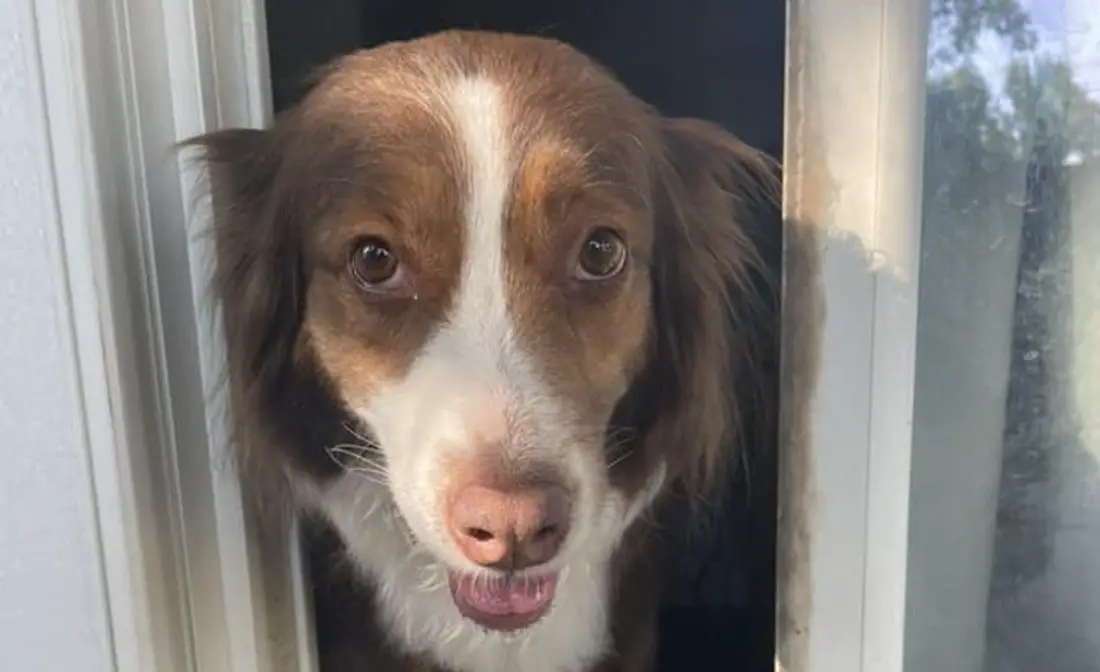
After a dog enema, you can expect increased bowel movements, temporary discomfort, changes in stool consistency, and potentially some abdominal cramping, nausea, or vomiting.
Bowel Movements
Once the enema is complete, your dog will likely need to defecate. The timing can vary – it may happen immediately or could take a few hours.
It’s also normal for a dog to not poop regularly after an enema. In fact, a period of 2-3 days without defecation is considered normal because the enema has reduced blockage.
From my experience as a veterinarian, I’ve seen dogs typically poop within 15 to 30 minutes post-enema. However, this time frame can be shorter or longer depending on the dog’s individual response and the severity of the initial constipation.
Discomfort and Changes in Stool Consistency
After a dog enema, it’s typical to observe some discomfort in your pet along with changes in the consistency of their stool.
Post-enema, your dog may experience temporary discomfort. This is a standard response to the procedure and should subside within a short time. During this period, your pet may be less active or show signs of unease – but rest assured, this is a normal part of the process.
Changes in stool consistency are also to be expected after a dog enema. Initially, the stool may be watery or looser due to the effects of the enema solution. Over time, as the bowel regains its normal function, the stool should return to its usual consistency.
Abdominal Cramping, Nausea, or Vomiting
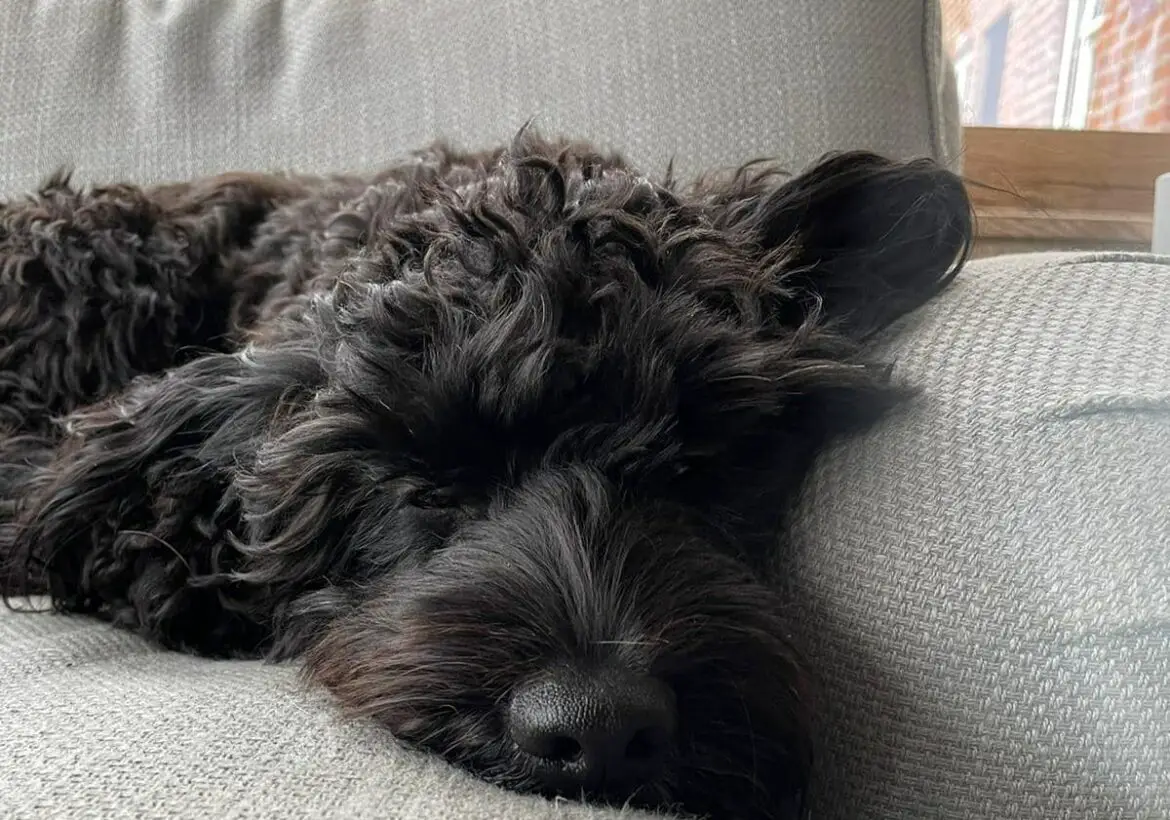
Following a dog enema, it’s possible for dogs to experience symptoms like abdominal cramping, nausea, or even vomiting.
When a dog has had an enema, the introduction of fluid into their system can sometimes cause a degree of abdominal discomfort.
This might present as cramping, which could lead your pet to act more lethargic than usual or show signs of distress. It’s important to remember that these signs are generally temporary and should subside as the effects of the enema wear off.
Nausea and vomiting can also occur after an enema, although these symptoms are less common. The procedure can upset your dog’s gastrointestinal tract, leading to nausea or vomiting. However, these symptoms should not persist for a long period says WikiHow.
Rectal Irritation
The process of a dog enema involves the introduction of fluids into the rectum, which can lead to some irritation in this area.
This can manifest as your dog excessively licking or biting at their rear end, showing signs of discomfort like whining or whimpering or displaying restlessness.
These reactions are generally due to the mild discomfort and irritation that can occur post-procedure.
From my perspective as a vet, I’ve observed that these symptoms usually subside as the irritation decreases over time.
However, in some cases, there might be visible signs of bleeding or more severe discomfort.
This could potentially indicate a more serious issue like rectal trauma or perforation, which would require immediate veterinary attention as per FlemingtonVet.
Increased Thirst
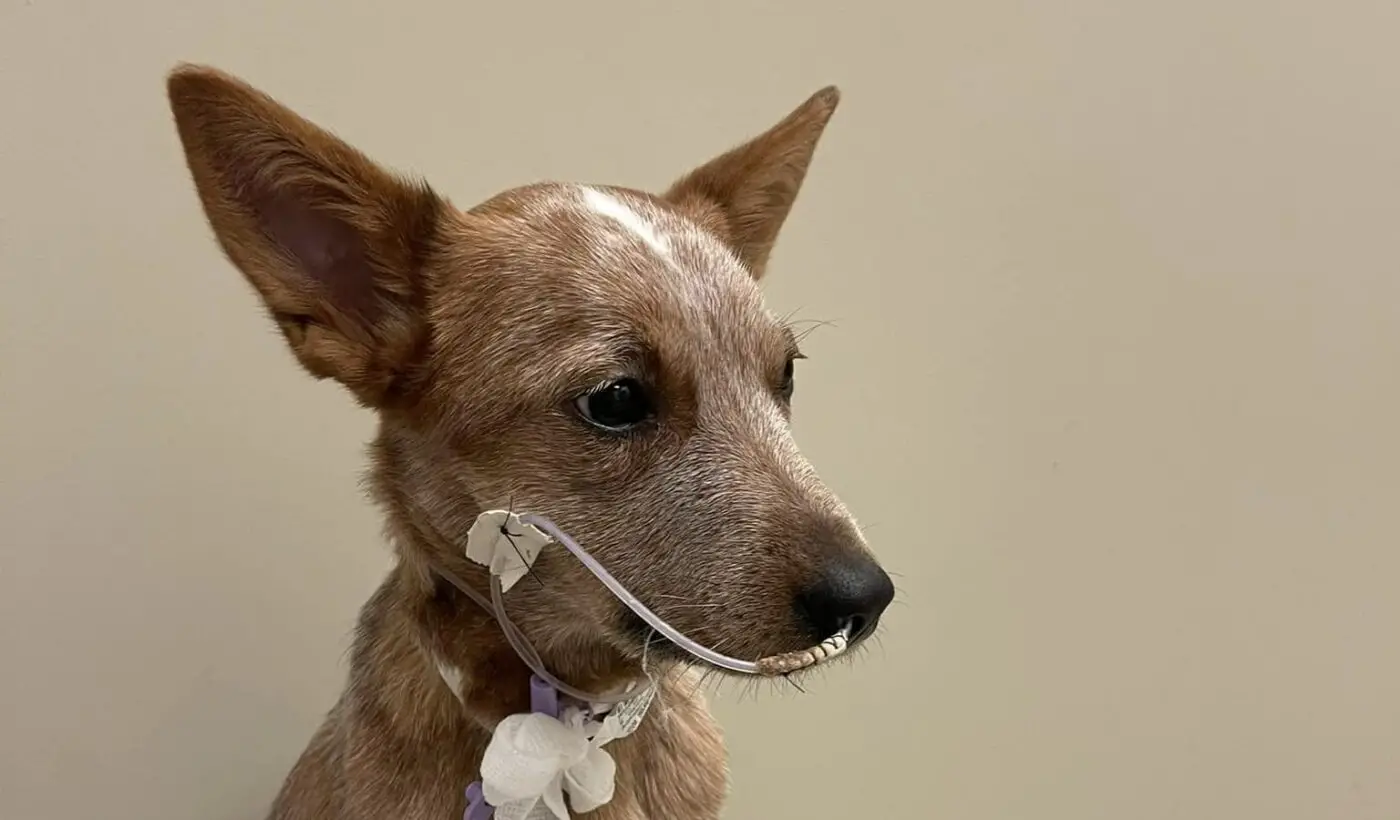
Post-enema, your dog may display an elevated thirst level. This is typically due to the body’s response to the procedure, as it attempts to rehydrate and regain equilibrium.
The enema process can shift fluid balance within the body, leading to a temporary increase in your dog’s need for water.
Drawing from my experience as a vet, I’ve seen many dogs display increased thirst after undergoing an enema.
It’s crucial to ensure that your pet has access to fresh water at all times to help them rehydrate.
However, if you notice excessive drinking that doesn’t subside or worsens over time, it could be a sign of an underlying issue, like dehydration or a more severe reaction to the procedure.
In such cases, it’s advisable to seek further veterinary advice to safeguard your pet’s health.
Temporary Fatigue
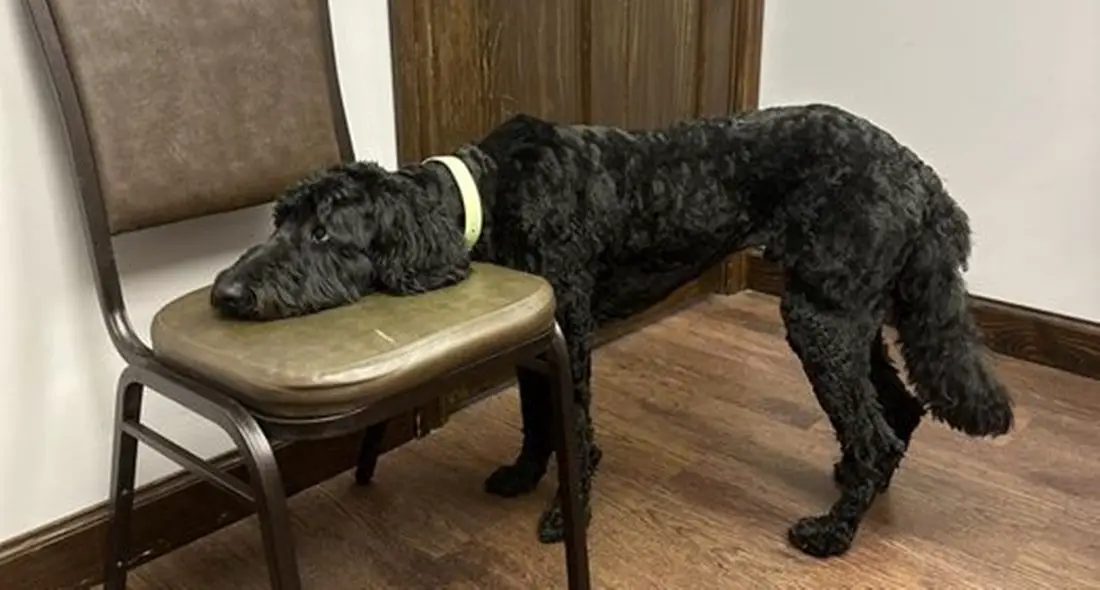
Post-enema, your dog may seem more tired or lethargic than usual. This is generally due to the body’s natural response to the procedure.
The process of an enema can be somewhat stressful for your pet, and the subsequent need to defecate can also cause them to feel worn out.
In my time as a vet, I’ve seen many dogs experience this temporary fatigue following an enema. It’s important to allow your pet to rest and recover during this time.
However, if the lethargy continues for an extended period or if your pet displays other concerning symptoms, it would be wise to seek further veterinary advice says MSD Veterinary Manual.
Appetite Changes
The appetite of your dog may fluctuate following an enema.
This could manifest as a decreased desire to eat, which can be linked to the discomfort or stress associated with the procedure, or even the underlying issue that necessitated the enema in the first place.
It’s also possible that the enema, by resolving constipation or blockages, might restore a previously diminished appetite.
Learn more about the possible side effects of enemas in dogs.
Typical Behavior Resumption

Post-enema, it’s usual for dogs to start reverting to their regular habits and demeanor over time. This could include normal eating patterns, activity levels, and general behavior.
The pace at which this happens can vary depending on the dog and the reason for the enema.
Some dogs bounce back quickly and see themselves almost immediately, while others may need a day or two to fully recover as per WebMD.
Learn how to prepare your dog and carry out an enema.
What Are The Side Effects Of Enema?
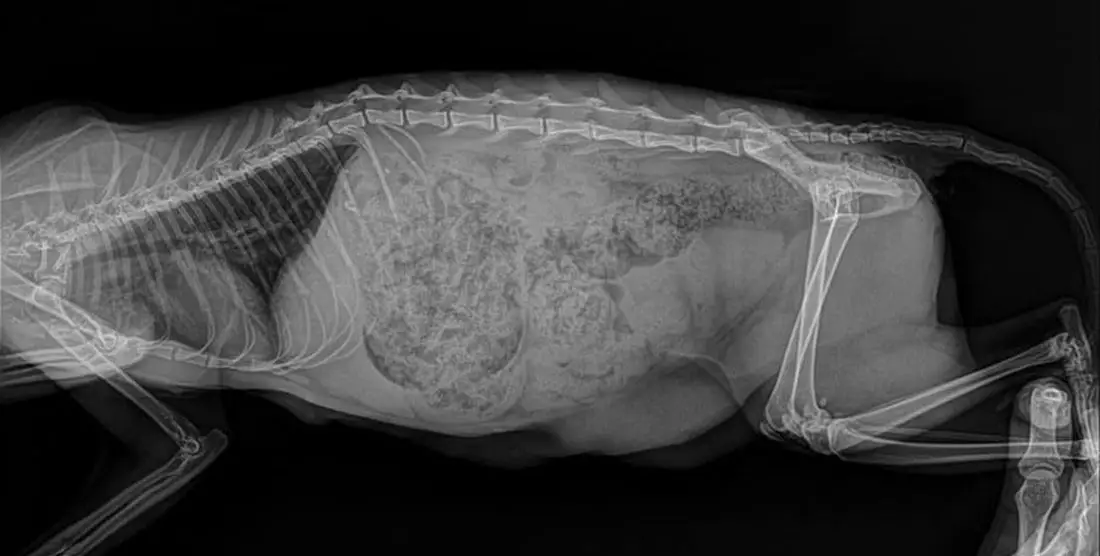
Enemas, while often effective for relieving constipation, can cause a range of side effects from mild discomfort to serious health complications.
Bloating and Cramping
Bloating and cramping are common side effects of enemas as they involve the introduction of fluid into the colon, causing it to expand.
This expansion can lead to discomfort in the form of bloating and cramping. These symptoms are usually temporary and subside once the body expels the fluid and fecal matter.
Tissue Damage
If an enema is not administered correctly or is used too frequently, it can cause damage to the rectum and intestinal tissues.
This can result in pain and bleeding. Serious complications such as perforation can occur as well, which is a life-threatening condition that requires immediate medical attention.
Infections
There is a risk of infection with the use of enemas, especially if the equipment used is not properly sterilized. Infections can also occur if bacteria are introduced into the body during the procedure.
These infections can range from minor to severe and require appropriate medical treatment.
Electrolyte Imbalance
Enemas can disrupt the balance of electrolytes in the body. This imbalance can lead to a variety of symptoms, including weakness, confusion, and seizures.
In severe cases, electrolyte imbalances can be life-threatening. Long-term use of enemas can increase the risk of these imbalances occurring as per VCA Hospitals.
Vomiting
Some dogs may react poorly to enemas, resulting in vomiting. This could be due to the discomfort caused by the procedure or a reaction to the solution used.
Vomiting can also lead to dehydration, which can further complicate the dog’s condition.
Dehydration
Dehydration is a serious risk associated with enemas. If a dog experiences prolonged diarrhea after an enema, it can lead to significant fluid and electrolyte loss, resulting in dehydration.
This can have serious effects on the kidneys and heart and requires immediate medical attention.
Weakness and Death
Severe electrolyte imbalances, particularly those caused by sodium phosphate enemas, can lead to extreme weakness and even death. This is a serious side effect that requires immediate medical intervention.
Diarrhea
Enemas are designed to stimulate bowel movements, but they can sometimes cause diarrhea.
This is especially likely if the enema solution is too strong or the procedure is performed too frequently. Diarrhea can also contribute to dehydration and electrolyte imbalances.
Depression
Dogs can experience depression as a result of the discomfort and stress associated with receiving an enema.
Changes in behavior, reduced appetite, and lack of interest in normal activities are signs of depression in dogs and should be addressed by a veterinarian says PetMD.
How To Care For Your Dog Post Enema

Caring for your dog post enema involves monitoring their recovery, providing a comfortable environment, adjusting their diet, and observing any changes in their behavior and bowel movements.
Keeping Your Dog Calm
It’s essential to maintain a calm environment for your dog after an enema. Overstimulation from toys or prolonged walks could potentially cause distress and hinder their recovery.
From my experience as a vet, I’d recommend keeping activities low-key and allowing your pet ample time to rest.
Monitoring Defecation
Your dog will likely need to defecate after the enema, which can happen immediately or take a few hours. It’s important to be patient and give your pet the opportunity to relieve themselves in a stress-free setting.
Also, it’s normal for a dog to go without pooping for 2-3 days after an enema, so don’t worry if you don’t see immediate results.
Adjusting Diet
Following a dog enema, it can be beneficial to offer your dog a different food to support their recovery. Soft foods like boiled chicken or beef, or even broths, can be easier for them to digest while they’re recovering.
As a vet, I’ve often suggested this dietary adjustment to pet owners to ensure their pets get the necessary nutrition during their recovery period.
Observing Behavior
Recovery time after a dog enema can vary from a couple of days to a week, depending on the individual dog and their specific condition.
During this time, it’s crucial to observe your pet’s behavior. Look out for signs of discomfort, changes in appetite, or alterations in their usual demeanor. If you notice anything concerning, consult with a vet promptly.
Post-Procedure Care
Some sources suggest that your dog should wear a cone-shaped collar post-procedure to prevent trauma caused by pawing at their eyes.
In my experience, this isn’t always necessary after an enema, but it’s worth discussing with your vet if you have concerns about your pet’s comfort and safety.
Can An Enema Help a Dog With a Blockage?

An enema can potentially help a dog with a blockage, but it depends on the severity and location of the blockage, and should always be administered by a professional.
While an enema can sometimes help to soften and remove fecal matter causing a blockage, it isn’t a cure-all solution.
It’s often used as a part of a larger treatment plan that might include medication or, in severe cases, surgery.
From my experience as a veterinarian, I’ve seen cases where an enema has helped dogs with minor blockages.
However, for more serious obstructions, particularly those located higher up in the intestines, an enema may not be effective.
In such situations, surgical intervention is often required to safely and effectively remove the obstruction.
When To Seek Medical Assistance After a Dog Enema
Medical assistance should be sought after a dog enema if your pet exhibits signs of distress, such as rectal bleeding, shaking, continued constipation, or other abnormal behaviors.
After a dog has an enema, it is normal for them to feel a bit uncomfortable and possibly have loose stools. However, certain symptoms could indicate complications or adverse reactions.
If your dog is bleeding from the rectum, shaking, appears to be in pain, or is still unable to defecate, these are signs that immediate veterinary attention is required.
In my years of practice as a veterinarian, I’ve seen cases where dogs reacted poorly to enemas due to various factors.
For instance, sodium phosphate enemas can be toxic to dogs, leading to electrolyte abnormalities and GI upset.
Additionally, if the enema is not administered correctly, it could cause damage to the rectal tissue, leading to bleeding.
How Many Times Can a Dog Have An Enema?
A dog can have an enema as many times as deemed medically necessary by a veterinarian, but it’s not a routine procedure and should only be done under professional supervision due to potential health risks.
The frequency of administering an enema to a dog depends on the pet’s specific health condition, but it should only be done when medically necessary and under veterinary supervision.
Enemas for dogs are typically a last resort treatment for severe constipation or other bowel complications.
While there’s no hard and fast rule for how often a dog can have an enema, it’s crucial to understand that these procedures should not be performed routinely.
Enemas are typically reserved for situations where all other options have been exhausted and under the guidance of a veterinarian.
In my professional experience as a vet, I’ve seen cases where a dog might need an enema every week or so due to a chronic health issue.
However, in most instances, once the underlying problem is addressed, the need for frequent enemas diminishes.
For instance, if a dog is severely dehydrated and constipated, administering an enema may be necessary every few hours until the dog recovers from dehydration, as mentioned in one of the search results.
How Fast Do Enemas Work In Dogs?
Enemas usually work within a few minutes, although it may take up to 24 hours for some dogs. If your dog is having difficulty passing stool, an enema may be a helpful treatment option.
Enemas are commonly used for constipated dogs, as they help to expel feces from the rectum and colon. A dog enema procedure is relatively simple and can be done at home with some basic supplies.
How Long Do The Effects Of Enema Last For?
The effects of an enema in dogs typically last up to 24 hours, with most dogs returning to their normal selves within this time frame.
After an enema is administered, most dogs will start to pass stools within a couple of hours.
The exact timing can vary based on the dog’s individual health condition and the severity of their constipation.
Some dogs may take longer to start defecating, especially if they were severely constipated or if they have an underlying health issue that affects their digestive system.
It is normal for a dog to feel a bit uncomfortable immediately after an enema. They may experience temporary side effects such as bloating, cramping, or diarrhea.
However, these symptoms usually subside once the dog has passed stools and expelled the enema solution.
FAQs
Q: Why would a dog need an enema?
A: Dogs may require an enema if they are constipated or have a blockage in their colon that prevents normal bowel movements.
Q: What are the signs that a dog needs an enema?
A: Signs that a dog may need an enema include straining to defecate, passing small amounts of hard, dry stool, abdominal discomfort, and a distended abdomen.
Q: How is a dog enema performed?
A: A dog enema is typically performed by a veterinarian or a trained professional. The procedure involves gently inserting a lubricated tube into the dog’s rectum and slowly injecting a warm saline solution or other prescribed liquid into the colon.
Q: Is a dog enema painful?
A: When performed correctly, a dog enema should not cause any pain. The insertion of the enema tube may cause some mild discomfort. But, the solution should help to relieve any discomfort associated with constipation.
Q: How long does a dog enema take to work?
A: The time it takes for a dog enema to work can vary. In some cases, the dog may start to defecate within a few minutes to an hour after the enema is administered. However, it may take longer in other cases depending on the severity of the constipation or blockage.
Q: Can I give my dog an enema at home?
A: It is generally not recommended to perform a dog enema at home unless you have been specifically instructed and trained by a veterinarian. Improper administration of an enema can cause harm to your dog. It is best to consult with a professional before attempting a dog enema at home.
Q: How can I prevent the need for a dog enema?
A: To prevent the need for a dog enema, it is important to maintain a healthy diet and ensure your dog stays hydrated. Regular exercise and providing plenty of opportunities for your dog to go outside and eliminate can also help prevent constipation and blockages.
In Conclusion
A dog enema can be a helpful procedure for relieving constipation and removing fecal matter from the colon.
After an enema, it is normal for your dog to experience some discomfort or have loose stools for a short period of time.
However, with proper care and monitoring, your dog should return to their normal self within a day or two.
If you notice any concerning symptoms, be sure to consult with your veterinarian for further guidance.

